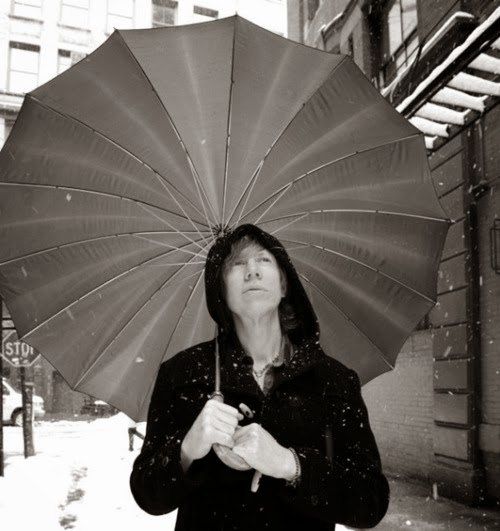One of the minor pleasures and curiosities of being in a “walking city” is that once in a while you see celebs, just walking around. Although I've seen a few celebs in LA, I’ve never seen any of them walking. Spotting Nick Nolte leaning against his Prius in the parking lot of the Vons supermarket at the corner where Hollywood and Sunset Boulevards meet, is as near as I’ve come. Though there's obviously evidence here that he can be seen walking sometimes.
When I lived in Park Slope in Brooklyn, I collected a whole set of sightings – John Turturro, Paul Auster, Steve Buscemi et al.
In Paris I once got off the Eurostar train, walked out of the station and there immediately was Jane Birkin, also walking, although in fact I think she was looking for a taxi.
My London sightings included Bob Geldof (more than once), Joe Strummer, Cliff Richards, Julian Cope, Peter Ackroyd; but given how long I lived in London, the sighting were perhaps surprisingly few.
Just once in a while the celeb sees you looking and looks back. And of course you have to play it cool. Brief eye contact and an “I know who you are” nod is as much as is required. I had one of those moments once in Manhattan with Thurston Moore. He was walking along lower Broadway, having just come out of Dean and DeLuca, and I was on my way in, and we went through the old “look and nod routine.” It was a small bright spot in my day, though probably not in his.
And now Thurston Moore is living in London, and he’s written a piece for a pamphlet titled On Community, produced by New Humanist magazine in association with the Stoke Newington Literary Festival.
He says of his earlier trips to London, when he stayed in Stoke Newington, “I wanted to be in London and traipse the streets of the Slits, Gang of Four, PiL, the Raincoats but, unlike the minuscule parameters of NYC geography, London was a sprawl the size of a small state. Determined to find action, I'd leave Stoke Newington for Camden Town or Notting Hill by hoofing it to Church Street and waiting for the 73 to get me to Kings Cross and into the city lights.” Then adds, “In hindsight I wish I'd stayed close to Stoke Newington, indeed all of Hackney, and investigated its world.”
I understand what he means. I once almost lived in Stoke Newington, but in the end decided it was too far away, too far from the center of things. These days however, Stoke Newington seems to be the center of the London cultural universe, and one way or another I always seem to end up there when I’m in London. And Abney Park Cemetery seems like the very center of the center.
Indeed, the picture above shows Thurston Moore in the Abney Park Cemetery, and not so long ago, and not for the first time, I found myself walking there with my fellow scribe and drifter Travis Elborough. And we came across this gravestone:
Literary know-it-alls though we may sometimes appear, we’d never heard of Eric Walrond, though it was hard to resist a book titled Tropic Death.
I now know that Walrond was a respected, if fringe, figure of the Harlem Renaissance. Tropic Death is a collection of twelve short stories, first published in 1926. According to his publisher, “This book of stories viscerally charts the days of men working stone quarries or building the Panama Canal, of women tending gardens and rearing needy children. Early on addressing issues of skin color and class, Walrond imbued his stories with a remarkable compassion for lives controlled by the whims of nature.”
I confess I haven’t read the book. I have however read an article by Walrond published in the magazine The Messenger in 1924, about walking in Harlem. “Along the avenue you are strolling. It is dusk. Harlem at dusk is exotic. Music. Song. Laughter. The street is full of people – dark, brown, pomegranate. Crystal clear is the light that shines in their eyes. It is different, is the light that shines in these black people’s eyes. It is a light mirroring the emancipation of a people and still you feel that they are not quite emancipated. It is the light of an unregenerate.”
I wonder if Walrond felt any more emancipated in London. He died there in 1966, having collapsed from a heart attack while walking in the street.









No comments:
Post a Comment